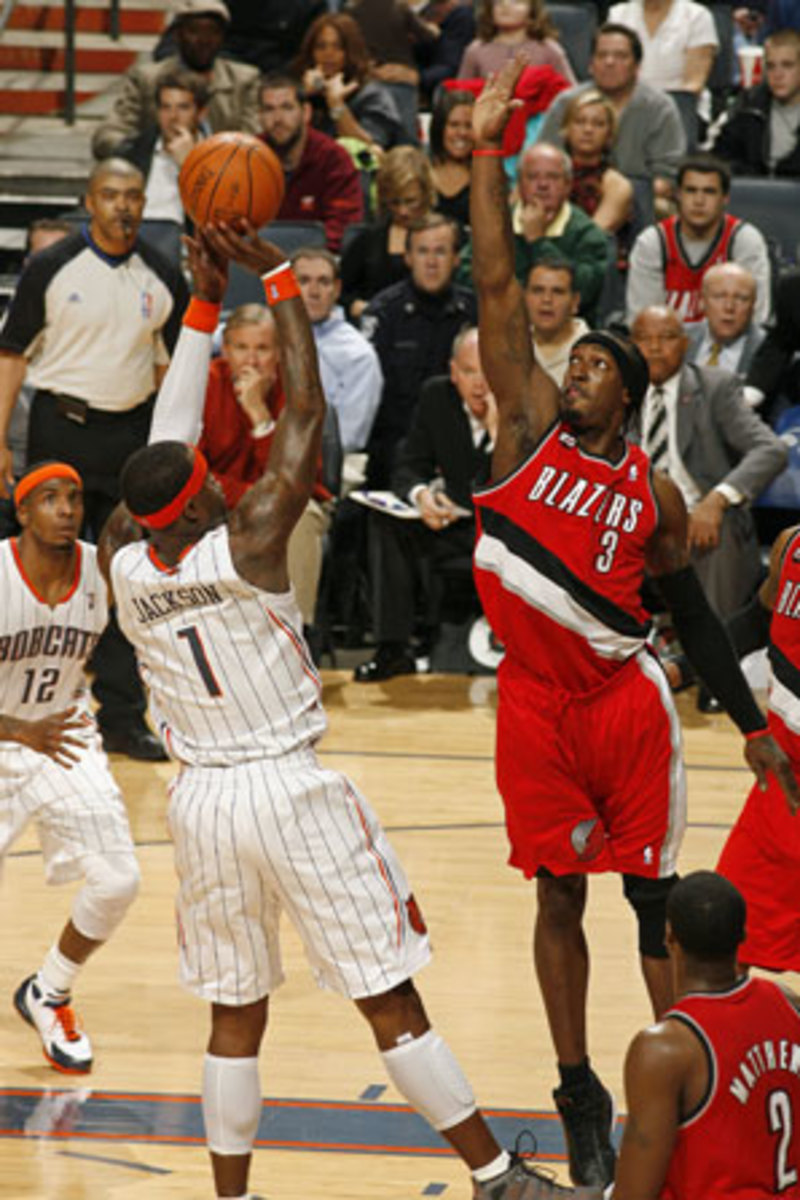
Wallace trade saps life out of 'Cats
When Paul Silas took over as the Bobcats' head coach in December, he inherited a 9-19 team with a broken point guard (D.J. Augustin), a surly shooting guard (Stephen Jackson) and a roster of players who had chafed under the heavy-handed coaching of Larry Brown. Undaunted, Silas installed a more up-tempo offense, empowered Augustin and rebuilt the confidence of role players like Gerald Henderson and Kwame Brown by urging them to shoot whenever -- and wherever -- they were open. The result was an 11-6 start to the Silas Era and a renewed optimism in the locker room.
That optimism is gone now, sucked out with the trade deadline deals that shipped Gerald Wallace and Nazr Mohammed out of town. Charlotte is 2-6 since the trades, a stretch that included a 40-point pounding in Denver, the worst loss in franchise history. Bobcat players were "crushed" by the trade, while Wallace, the franchise's only All-Star and the team's second-leading scorer, felt the deal was a "slap in the face."
"[The trade] was very difficult," Silas said. "With Gerald, he was really leading the team in the right direction. We were beating some very good teams. With him I thought we would be able to be in every game we played and have a chance to win. Now it's very difficult. But that's part of the business. Now they want to revamp this thing and make sure in the future we have the best team that we can have. I understand that completely."
Indeed, the Wallace deal was made with an eye toward the future. By trading Wallace, the Bobcats freed themselves of the final two years and $21 million remaining on his contract and picked up a pair of first-round picks to (presumably) restock a roster that leans heavily on aging veterans. In theory, Charlotte has positioned itself as a contender for Chris Paul, the Winston-Salem, N.C., native who is also on Bobcats owner Michael Jordan's Jordan Brand team. As it stands now, Charlotte is set to have $50 million committed to salaries next season, leaving them with some financial flexibility to improve its roster, depending on the new collective bargaining agreement.
Flexibility is a nice but eventually it has to lead to something more. And there are no guarantees that the Bobcats' new assets will turn out any better than what they had before the Wallace deal. The two picks Charlotte holds in the 2011 draft -- its own and one from New Orleans, which was transferred from Portland -- will likely fall in the 10-20 range, which in a weak draft and with the team's shaky history (Adam Morrison, Brandan Wright, Alexis Ajinca and Henderson were past first-round picks) attaches questionable value. And while Paul may have strong ties to the area, it's hard to envision the lure of playing close to home will be stronger than the pull of big-market contenders like New York or Los Angeles (Lakers or Clippers) that are expected to vie for Paul's services.
By squashing the momentum Silas built, the Bobcats also likely blew an opportunity for the young players they already have (Augustin, Henderson, Tyrus Thomas) to compete in the playoffs. They could still get in -- through Saturday, Charlotte is tied with Indiana for eighth place in the woeful bottom of the Eastern Conference -- but would probably suffer a four-game annihilation rather than a competitive series with a pre-trade roster that beat Chicago (twice), Boston, and the Lakers before the All-Star break.
Silas continues to try to keep the attitude positive. He reminds his players daily that the playoffs are still within reach while his son and lead assistant, Stephen, works tirelessly with Henderson to help him adjust to his new expanded role. Silas knows he will be back next year -- Charlotte signed him to a one-year extension last month -- and that the uber-competitive Jordan wants to win just as bad as he does. But the hope that flowed in January has evaporated. Whether it was for the greater good remains to be seen.





